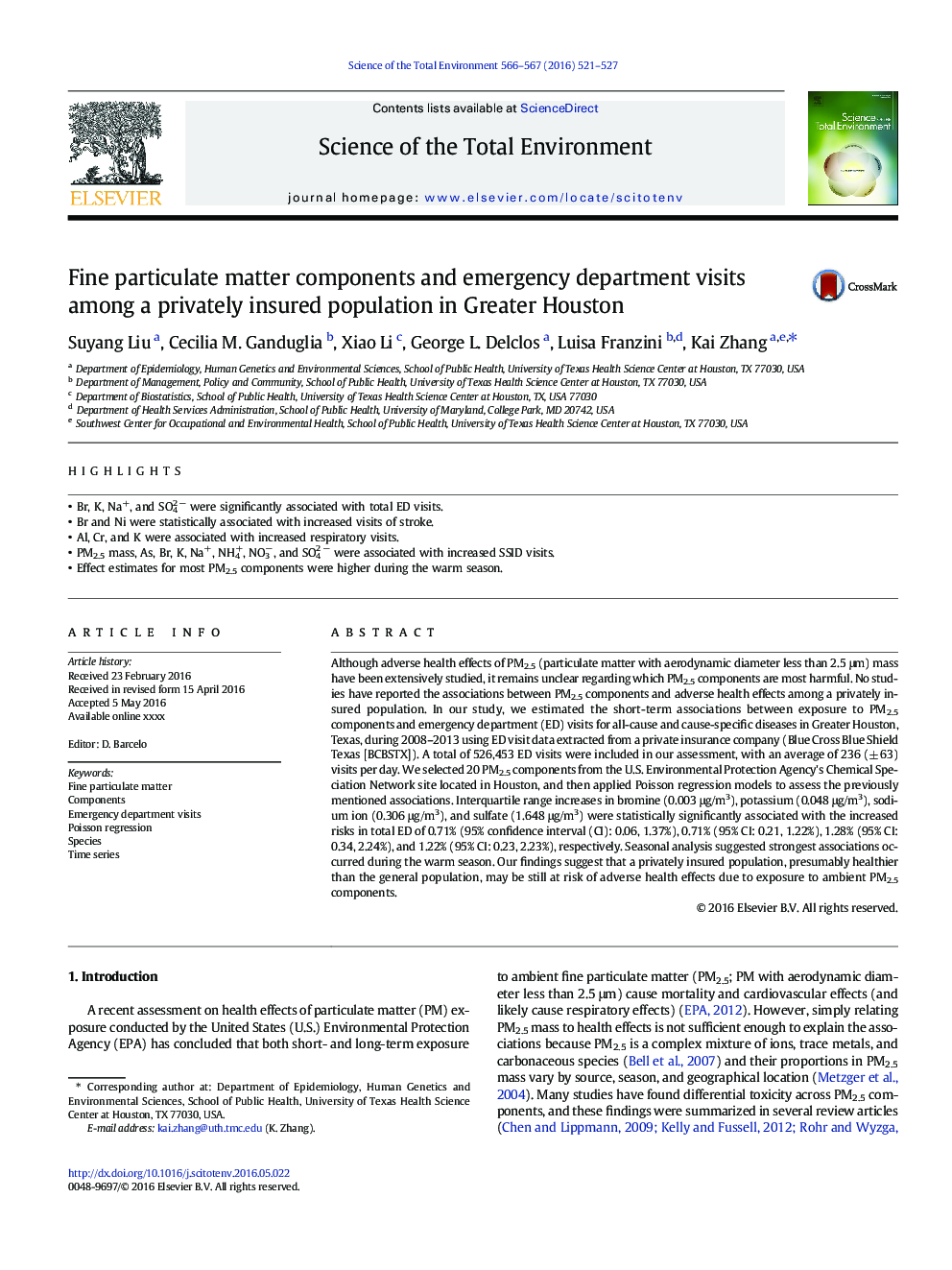| Article ID | Journal | Published Year | Pages | File Type |
|---|---|---|---|---|
| 6320858 | Science of The Total Environment | 2016 | 7 Pages |
Abstract
Although adverse health effects of PM2.5 (particulate matter with aerodynamic diameter less than 2.5 μm) mass have been extensively studied, it remains unclear regarding which PM2.5 components are most harmful. No studies have reported the associations between PM2.5 components and adverse health effects among a privately insured population. In our study, we estimated the short-term associations between exposure to PM2.5 components and emergency department (ED) visits for all-cause and cause-specific diseases in Greater Houston, Texas, during 2008-2013 using ED visit data extracted from a private insurance company (Blue Cross Blue Shield Texas [BCBSTX]). A total of 526,453 ED visits were included in our assessment, with an average of 236 (± 63) visits per day. We selected 20 PM2.5 components from the U.S. Environmental Protection Agency's Chemical Speciation Network site located in Houston, and then applied Poisson regression models to assess the previously mentioned associations. Interquartile range increases in bromine (0.003 μg/m3), potassium (0.048 μg/m3), sodium ion (0.306 μg/m3), and sulfate (1.648 μg/m3) were statistically significantly associated with the increased risks in total ED of 0.71% (95% confidence interval (CI): 0.06, 1.37%), 0.71% (95% CI: 0.21, 1.22%), 1.28% (95% CI: 0.34, 2.24%), and 1.22% (95% CI: 0.23, 2.23%), respectively. Seasonal analysis suggested strongest associations occurred during the warm season. Our findings suggest that a privately insured population, presumably healthier than the general population, may be still at risk of adverse health effects due to exposure to ambient PM2.5 components.
Keywords
Related Topics
Life Sciences
Environmental Science
Environmental Chemistry
Authors
Suyang Liu, Cecilia M. Ganduglia, Xiao Li, George L. Delclos, Luisa Franzini, Kai Zhang,
